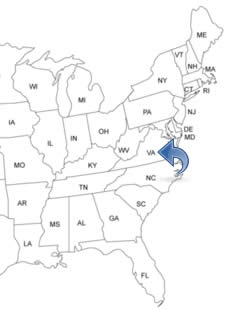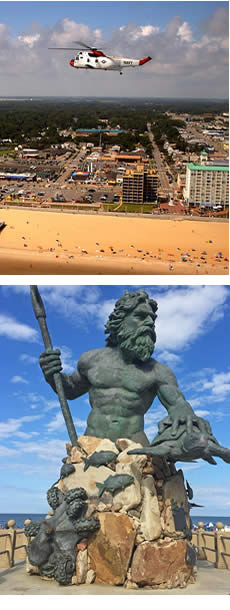VIRGINIA PEOPLE SEARCH!
- ✔ Contact Info
- ✔ Phone Numbers
- ✔ Criminal Records
- ✔ Income Info
- ✔ Neighbors
- ✔ People's Age
- ✔ Property Ownership
- ✔ And Much More
Virginia Beach, Virginia
Virginia Beach is located in the southeastern part and is the largest city in the U.S. State of Virginia. The Resort City, Neptune City. Virginia Beach is a city with 38 miles of beachfront and hundreds of hotels and restaurants along its oceanfront. It is a popular tourist destination and the city has more than 200 parks and more than 100 miles of bikeways. The city is a national leader in the green movement and is in the top 50 on Forbes list of best places for business and careers.
To See And To Do In Virginia Beach
- The Old Coast Guard Station
- First Landing Cross
- First Landing State Park
- Cape Henry Lighthouse
- Atlantic Wildfowl Heritage Museum
- Atlantic Avenue Souvenir Stores
- Sandler Center for the Performing Arts
- Lynnhaven Mall
- Hilltop Shopping Center
- Fishing
- Surfing
- Golfing
- The Virginia Beach Sportsplex
- Ocean Breeze Waterpark
- The Virginia Museum of Contemporary Art
- Virginia Beach Amphitheater
- Virginia Aquarium and Marine Science Center
- Mount Trashmore
History Of Virginia Beach - Timeline
In 1524, explorers from Spain mapped the Cape Henry coast (located in the northeast corner of Virginia Beach). In 1584, Sir Walter Raleigh and his men from England explored the area around Cape Henry. In 1607, the English seaman Christopher Newport, the adventurer and soldier Captain John Smith, and more than 100 men made their first landfall at Virginia Beach. They soon left the area and settled at today's Jamestown.
In 1610, several forts were built and in 1613, the first permanent settlement in today's Virginia Beach was described by Virginia's lieutenant governor, Samuel Argall. In 1632, the St Luke’s Church was built. In 1637, Adam Thoroughgood from Norfolk, England, who was one of the earliest Englishmen to settle in the area, helped name the county to Norfolk County (today's Princess Anne County). In 1639, the Old Donation Episcopal Church was built.
In 1648, Thomas Lambert received a grant for a tract in Lynnhaven. In 1649, William Moseley Senior from England and his family built the Rolleston Hall, a manor house in Dutch style. In 1671, the Weblin House was built, named after John Weblin, who inherited the property through his marriage to Thomas Lambert's daughter. In 1689, a Courthouse was built. In 1691, Norfolk County was renamed to Princess Anne County, for Princess Anne of England.
In 1720, the Adam Thoroughgood house was built. (It was earlier thought to have been built in 1636 but recent research says it was built 1720). In 1725, the Lynnhaven house was built. In 1759, the Georgian Style white brick house, Upper Wolfsnare, was built by Thomas Walke III, a major in the British Army. In 1791, the original Cape Henry Lighthouse was constructed.
In 1804, the historic brick building in a Georgian style, the Francis Land House, was built. In 1850, there were more than 7,600 people living in the town. In 1868, the daily newspaper, the Virginian-Pilot, was founded. (Headquarters in Norfolk). In 1881, the newer Cape Henry Lighthouse was constructed. In 1888, Virginia Beach got its first electricity and railway connection. In 1890, the Princess Anne Hotel opened.
In 1900, more than 11,100 people were living in the town. In 1902, the Chesapeake Transit Company opened an electric traction line from Norfolk to Virginia Beach. In 1903, the Old Coast Guard Station was built. In 1906, Virginia Beach was incorporated as a town. In 1922, the Virginia Beach Boulevard was established. In 1927, the Cavalier Hotel opened.
In 1930, the Atlantic University and the Virginia Beach Public Library System were established. In 1938, the Back Bay National Wildlife Refuge was established. In 1943, the military airport, Naval Air Station Oceana, was built. In 1952, Virginia Beach became a city. In 1954, the Princess Anne High School was founded. In 1964, the Chesapeake Bay Bridge-Tunnel opened. In 1974, the Mount Trashmore Park opened. In 1981, the Lynnhaven Mall opened. In 1996, the Virginia Beach Amphitheater was built.

